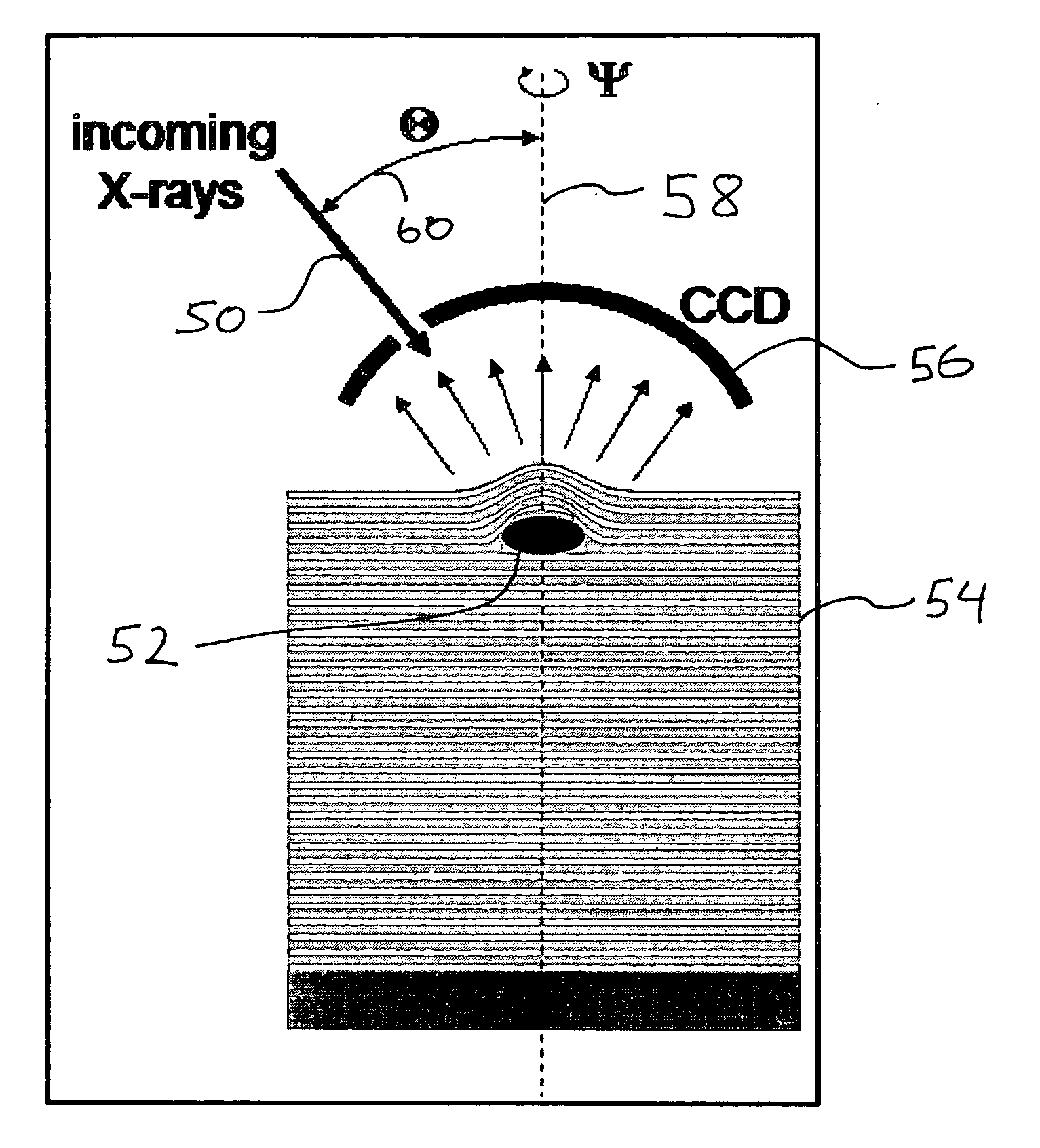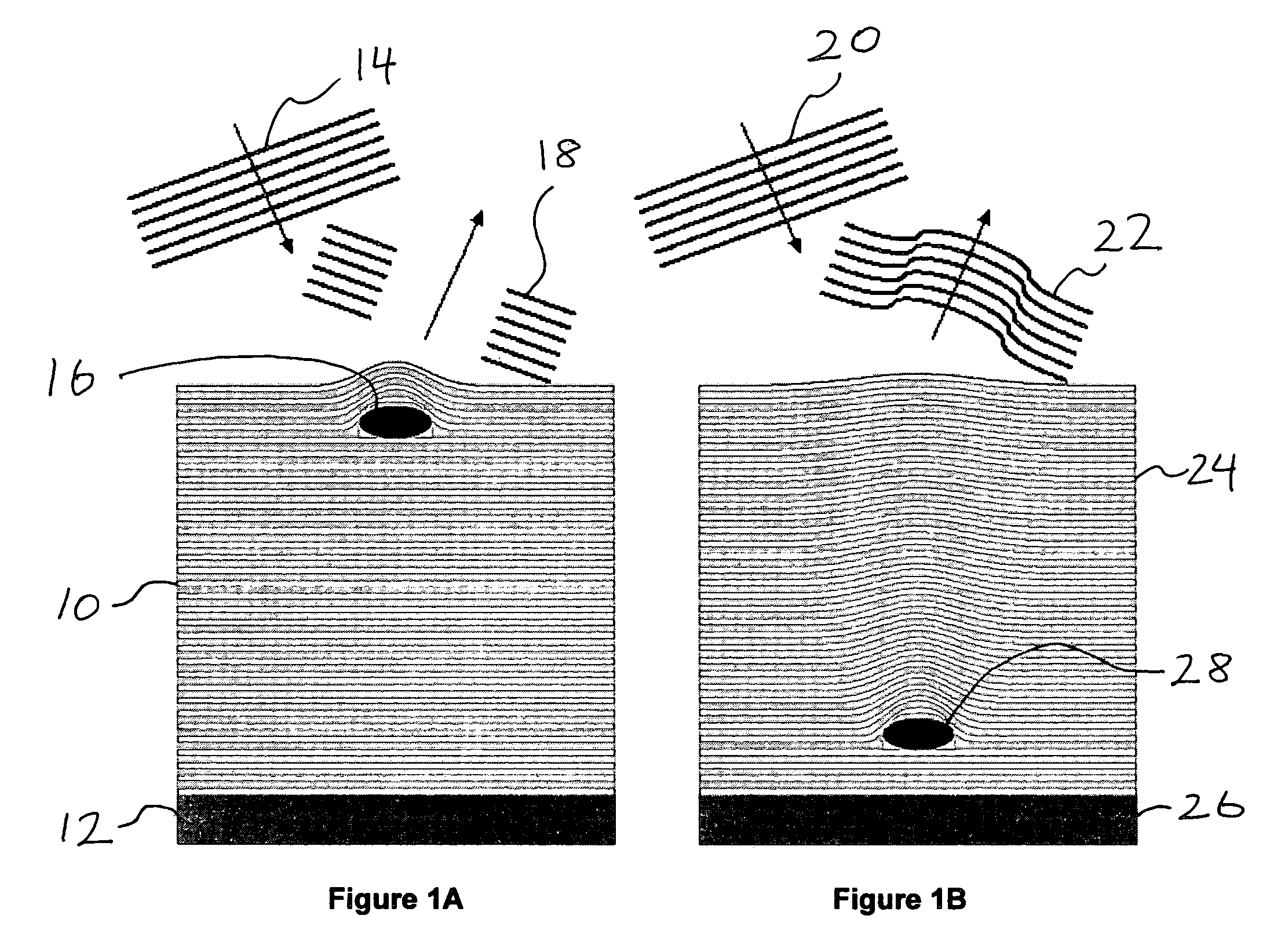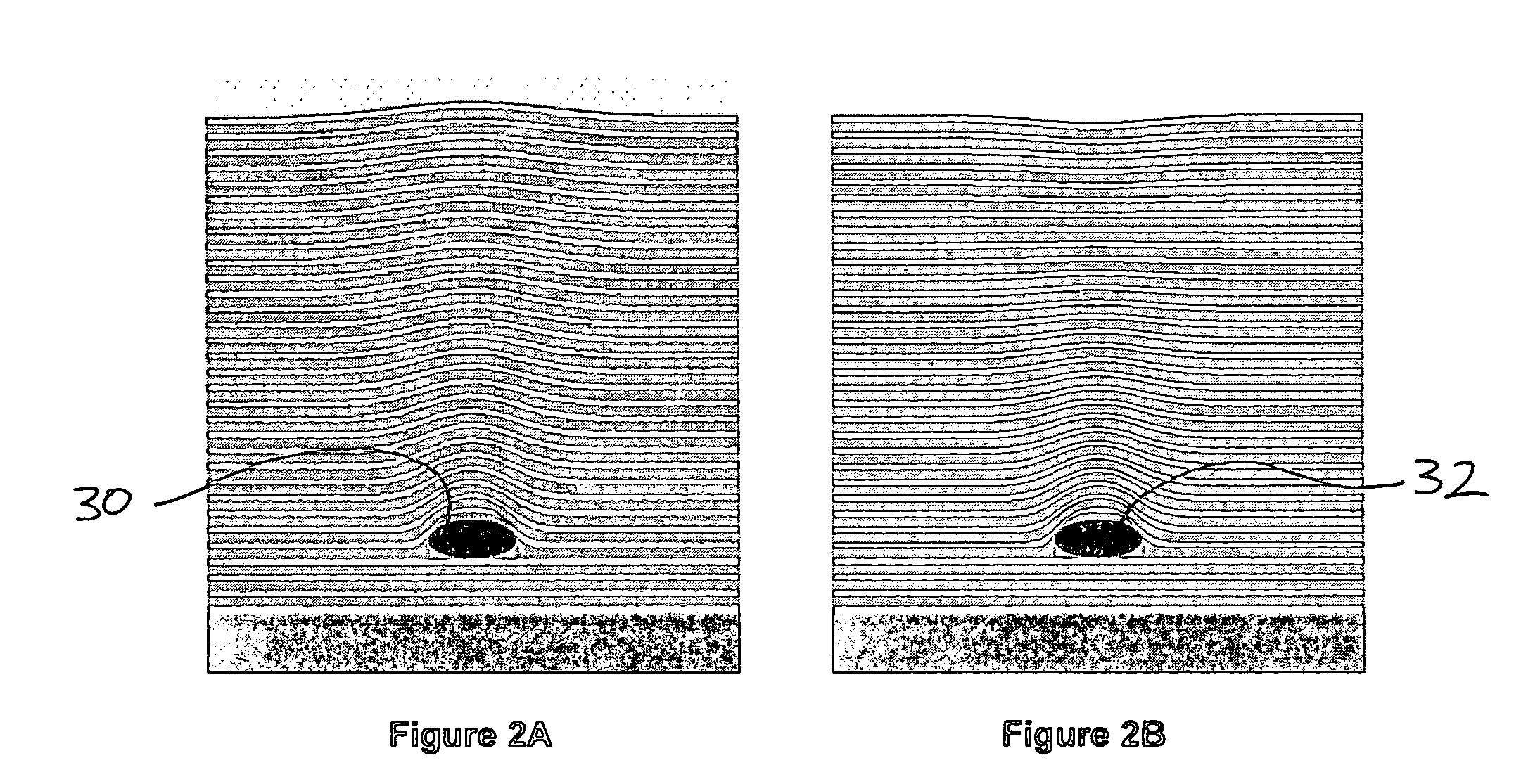Method for characterizing mask defects using image reconstruction from X-ray diffraction patterns
- Summary
- Abstract
- Description
- Claims
- Application Information
AI Technical Summary
Benefits of technology
Problems solved by technology
Method used
Image
Examples
Embodiment Construction
[0027] The present invention applies techniques for image reconstruction from X-ray diffraction patterns to produce three-dimensional images of defects in EUVL multilayer films. Techniques for image reconstruction from X-ray diffraction patterns are described in “Image reconstruction from electron and X-ray diffraction patterns using iterative algorithms: experiment and simulation,” Ultramicroscopy, Vol. 90, Issues 2-3, February 2002, Pages 171-195, incorporated herein by reference and in “Phase retrieval algorithms: a comparison,” Applied Optics, Vol. 21, No. 15, Aug. 1, 1982, Pages 2758-2769, incorporated herein by reference. The reconstructed image will give information about the defect position and the diffraction strength of the defect The positional information can be used to select the correct defect repair technique.
[0028] An experimental setup is shown in FIG. 4. An incoming X-ray beam 50 illuminates an area around a defect 52. It is preferable to use a focused beam. The b...
PUM
 Login to View More
Login to View More Abstract
Description
Claims
Application Information
 Login to View More
Login to View More - R&D
- Intellectual Property
- Life Sciences
- Materials
- Tech Scout
- Unparalleled Data Quality
- Higher Quality Content
- 60% Fewer Hallucinations
Browse by: Latest US Patents, China's latest patents, Technical Efficacy Thesaurus, Application Domain, Technology Topic, Popular Technical Reports.
© 2025 PatSnap. All rights reserved.Legal|Privacy policy|Modern Slavery Act Transparency Statement|Sitemap|About US| Contact US: help@patsnap.com



